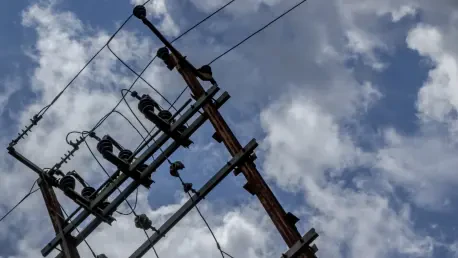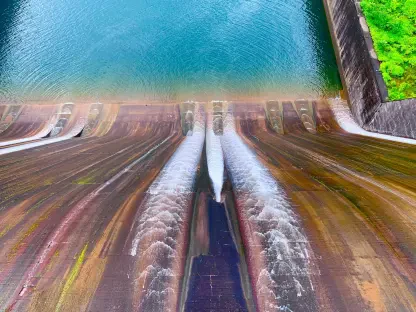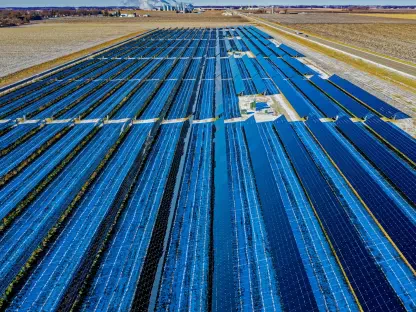The United States’ utility regulators are constantly battling to balance the urgent need to modernize the aging power grid with the rising costs of electricity for consumers. These modernization efforts, while crucial for improving the grid’s reliability, efficiency, and sustainability, come with significant financial implications. At the heart of this complex discussion, highlighted at the American Clean Power Association’s recent CleanPower conference, is the challenge of ensuring that updates to the power infrastructure do not disproportionately burden consumers.
The Necessity of Grid Modernization
Addressing Obsolete Infrastructure
The push for grid modernization is largely a response to the emerging pressures on outdated power grid systems. There is a clear consensus among industry stakeholders that modernizing the grid involves substantial upgrades to enhance the system’s resilience and adaptiveness in the face of changing energy demands. This includes integrating renewable energy sources, improving energy storage capabilities, and implementing smart grid technologies that allow for better management and distribution of electricity. In just the first quarter of this year, there were 726 policy actions related to grid modernization, each requiring substantial financial commitment. These actions are critical as they aim to overhaul infrastructure that has lagged behind in an era of rapid technological advancement. Nevertheless, these investments are not without consequences, as they lead to increased costs that often trickle down to consumers, outpacing the national inflation rate.
The Impact of Rising Electricity Prices
Alongside the push for updating the grid is a notable rise in electricity prices, which have outstripped the national inflation index. According to recent data from the Bureau of Labor Statistics, customers have experienced about a 4.5% increase in their electricity prices, compared to a 2.4% inflation rate. The discrepancy between these figures illustrates the economic strain that modernization efforts can place on consumers, particularly those in lower-income brackets or fixed-income households. This creates a significant challenge for utility companies and regulators, who must walk the tightrope of ensuring necessary infrastructure improvements without unduly burdening consumers. The rising costs are frequently cited in regulatory dialogues as both a barrier and an unavoidable consequence of keeping pace with evolving energy needs and environmental mandates.
Balancing Investments and Consumer Protection
Economic Scrutiny in Utility Regulation
Regulators find themselves at the intersection of modernizing the grid and managing electricity rates. At the conference, experts like Mark LeBel from the Regulatory Assistance Project underscored the intricate nature of these decisions, urging regulators to adopt a scrutinizing approach similar to business investors. This strategy involves rigorous evaluation of proposed investments to determine their necessity and potential return on investment from a consumer standpoint. Such an approach demands that utilities submit comprehensive and transparent proposals that outline the benefits of their investment plans. Abigail Anthony from Rhode Island’s Public Utility Commission drew parallels between these proposals and business loan applications, suggesting that such rigors could mitigate perceived risks and ensure customer protection.
Emerging Tools and Strategies
To address these complexities, regulators have begun to leverage innovative tools and strategies. New metrics and planning models have been developed to provide a clearer picture of investment impacts. This includes detailed cost-benefit analyses and resource allocation models to ensure that spending is not only effective but also justified. Effective planning processes allow regulators to pace spending initiatives and secure investments that add tangible value. Such tools are fundamental in maintaining accountability and regulatory oversight, fostering an environment where utility companies must provide measurable benefits for consumer rate increases. Despite these frameworks, the fundamental challenge remains the subjective nature of investment choices, where regulators often find themselves weighing immediate costs against long-term infrastructure gains.
Regional Approaches to Modernization
Diverse Regulatory Perspectives
Different states have adopted unique approaches to navigating grid modernization challenges. In Michigan, for example, the Public Service Commission utilizes DTE’s global prioritization model, acknowledging its role in predictive analysis while remaining skeptical of its limitations. This model helps in making informed investment decisions that aim to meet multiple objectives without overextending resources. California and Washington have reflected similar sentiments, emphasizing the importance of strategic planning in aligning rate hikes with reliable and efficient service delivery. These regional differences highlight the complex landscape of utility regulation across the country, where local economic, social, and environmental factors necessitate tailored approaches to modernization.
Strategic Implementation Examples
Some states have devised creative solutions that balance modernization with consumer protection. The Georgia Public Service Commission, for instance, requires large new load customers to sign comprehensive 15-year contracts, covering 100% of utility costs. This strategic move balances the need for investments in the grid with assurances of revenue to offset potential impacts on typical ratepayers. Such contractual agreements offer a clear vision of future financial commitments and protect consumers from abrupt rate increases. Additionally, states are increasingly resorting to audits and independent reviews. Tools like third-party audits, as utilized in Michigan for DTE and Consumers Energy’s systems, provide actionable recommendations that drive improvements without unnecessary financial burdens on the public.
Grid Modernization and Environmental Concerns
Resilience in the Face of Climate Change
The environmental aspect of grid modernization cannot be ignored, especially as climate change becomes a more pronounced threat. Extreme weather events, intensified by climate shifts, overwhelmingly threaten the current power infrastructure. Thus, investing in resilience is not just a matter of technical necessity but an urgent environmental priority as well. Andrea Staid from EPRI highlighted the “cost of inaction,” emphasizing that the failure to modernize invites far greater expenses linked to storm damages and prolonged outages. This has prompted regulators to consider climate resilience as integral to modernization plans, tying environmental sustainability to economic prudence.
The Role of Renewable Energy Integration
Renewable energy integration stands at the forefront of grid modernization discussions. Implementing renewable sources such as solar and wind into the grid requires substantial investments in new technologies and infrastructure modifications. This integration is pivotal in reducing carbon emissions and transitioning towards a cleaner energy future. However, the financial burden associated with these changes is a critical concern. Utilities are tasked with the dual challenge of maintaining competitive and affordable rates while investing in the transition to sustainable energy forms. Success in this regard not only hinges on advanced technology and innovative practices but also on public acceptance and transparent communication of the long-term benefits associated with green energy.
Key Takeaways and Future Implications
Moving Towards Sustainable Regulation
As grid modernization continues to unfold, the regulatory environment must adapt to support sustainable and economically feasible transformations. This includes fostering innovation in regulatory practices and embracing new methodologies that can predictably track investment impacts. Looking beyond immediate costs, policymakers ought to focus on fostering environments that value long-term gains and community benefits. Collaborative efforts between regulators, utilities, and consumers are fundamental in devising a pathway that accommodates all stakeholders’ needs. Additionally, ensuring that modernization efforts are in tandem with environmental and public policy goals will remain a critical aspect of future developments.
Expanding Stakeholder Engagement
Utility regulators in the United States are engaged in an ongoing struggle to strike a balance between modernizing the aging power grid and managing electricity costs for consumers. This challenge is at the forefront of discussions, such as those at the American Clean Power Association’s CleanPower convention, emphasizing the critical need for updates to the nation’s power infrastructure. These upgrades are essential for enhancing the grid’s reliability, efficiency, and sustainability. However, implementing such advancements carries significant financial implications, raising concerns about how these costs will be distributed among consumers. The challenge lies in ensuring that efforts to improve the nation’s power infrastructure, which is key to supporting clean and renewable energy sources, do not result in an uneven financial burden on households. As technology evolves and the demand for energy efficiency rises, utility regulators must carefully navigate these issues, considering not only the benefits of modernization but also its economic impact on consumers. This ongoing debate stresses the necessity of innovation in power systems while also prioritizing fair pricing and equitable access to energy for all Americans.









